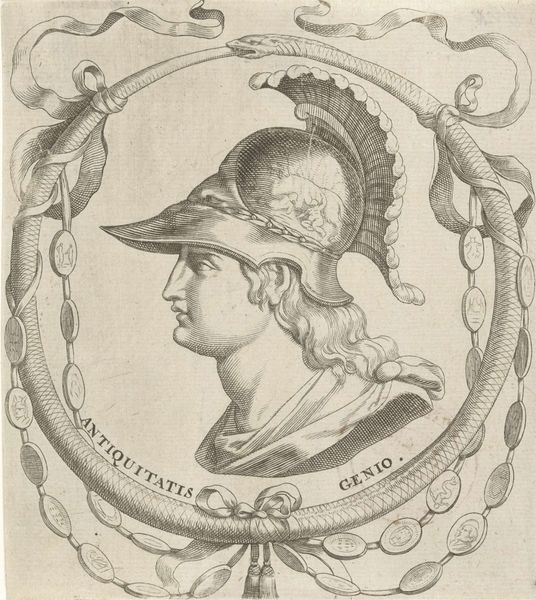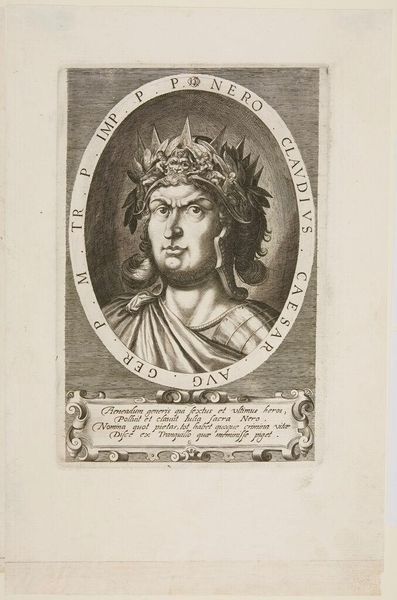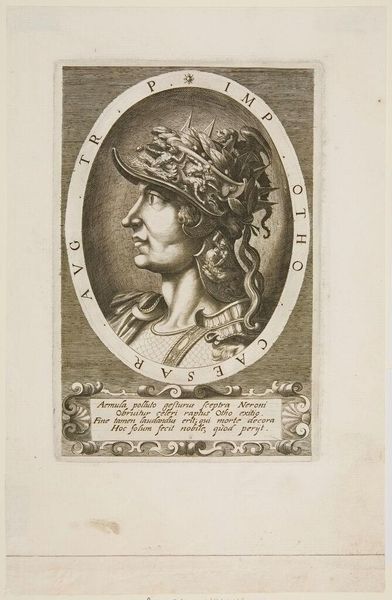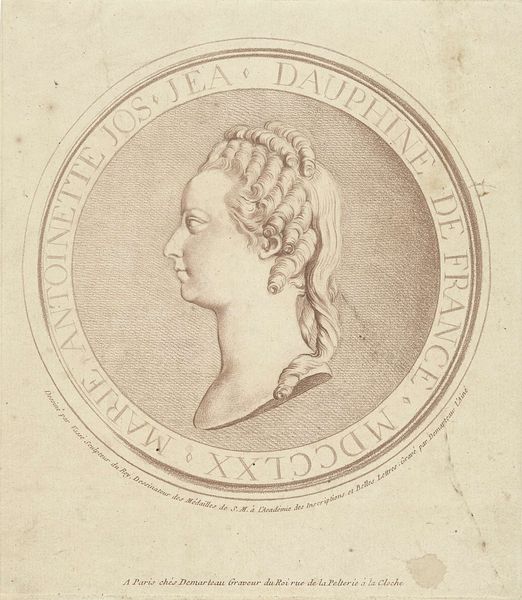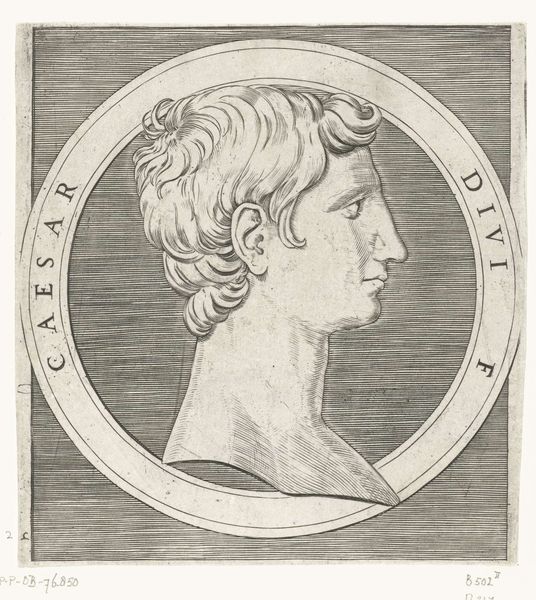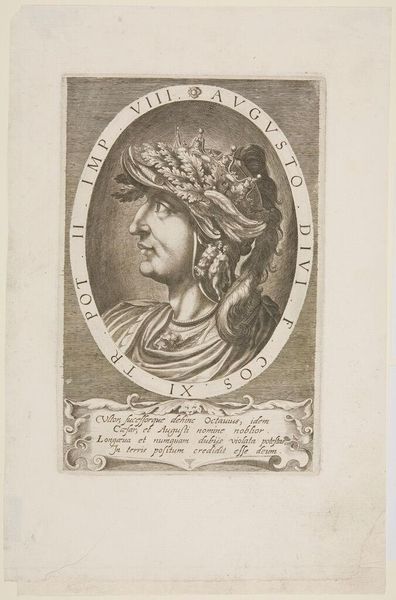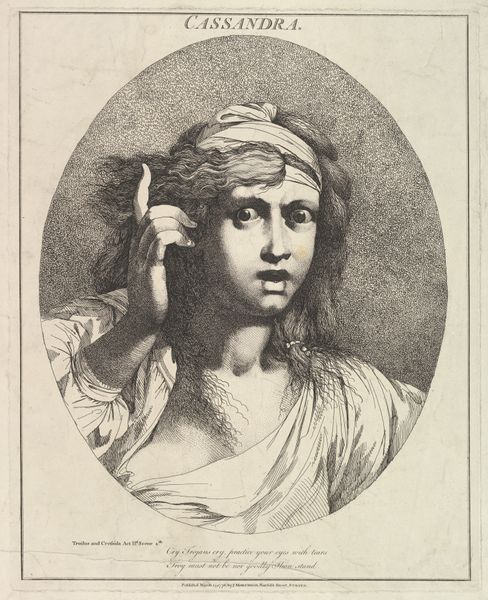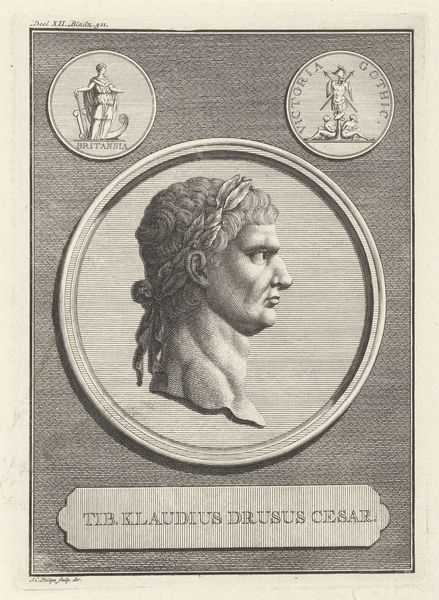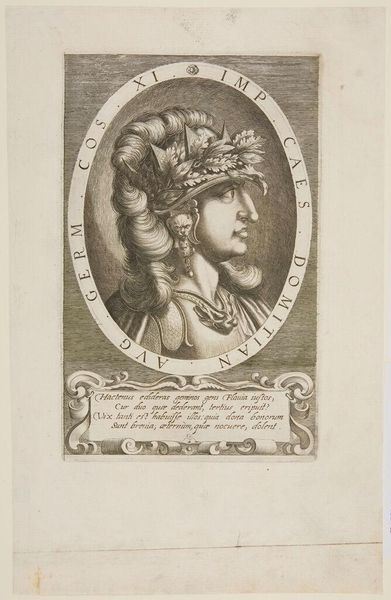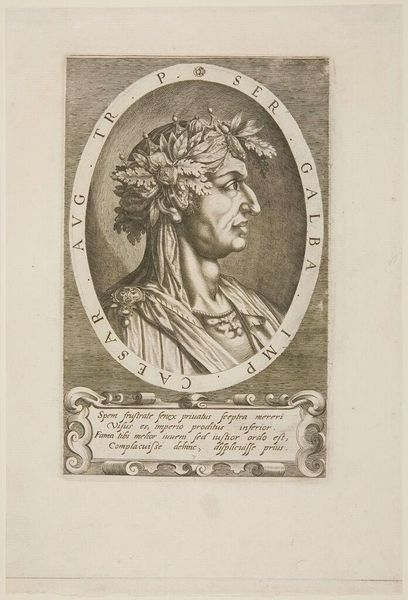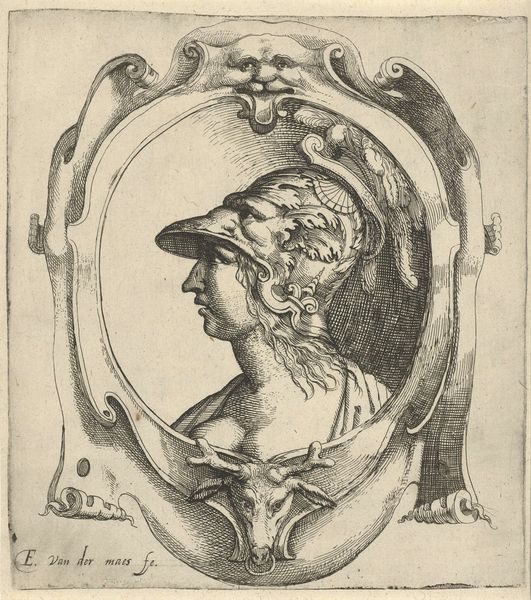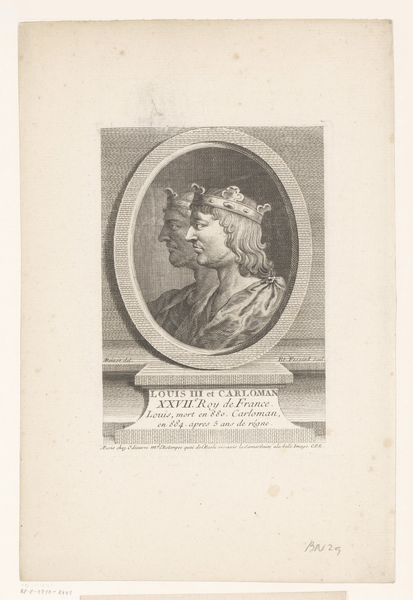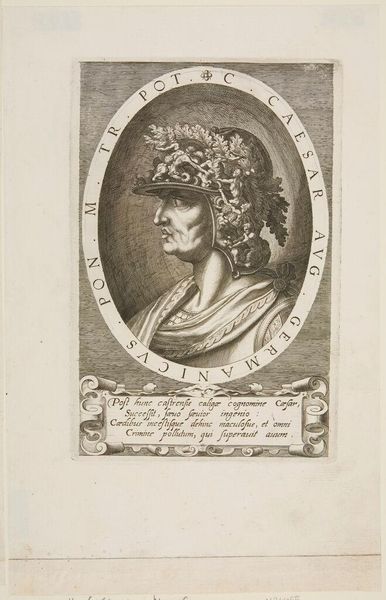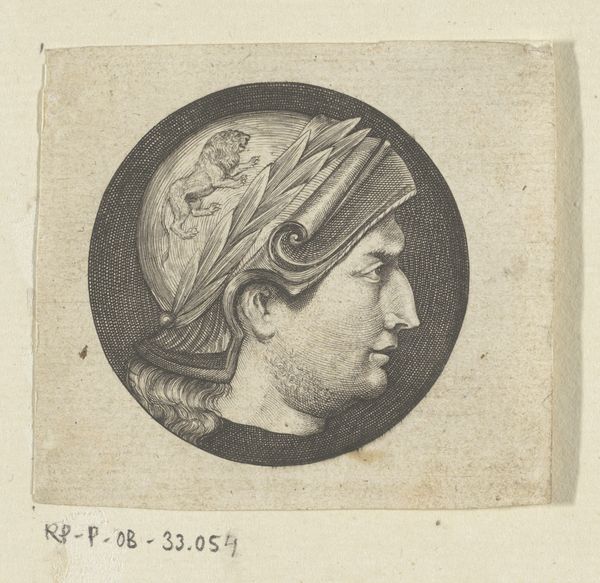
engraving
#
portrait
#
neoclacissism
#
old engraving style
#
classical-realism
#
form
#
line
#
history-painting
#
engraving
Dimensions: height 95 mm, width 72 mm
Copyright: Rijks Museum: Open Domain
Curator: At first glance, there is a cold statuary feel with a touch of ancient power. The sharp lines are intriguing. Editor: Indeed. What we are observing here is an engraving entitled "Portret van Catharina II de Grote, tsarina van Rusland," or "Portrait of Catherine II the Great, Tsarina of Russia." It was created sometime between 1786 and 1826 by Hendrik Roosing. The artwork utilizes an old engraving style. Curator: The detail given the engraving is fascinating; I see hatching everywhere, and tiny dashes building the sculptural form. The handwork must have been extensive. Are those burr marks I spy near the sphinx? What inks did they use for these early reproductions? Editor: Good eye! It's clear the labor involved in producing such a portrait had strong political significance in cementing Catherine’s power through image circulation. Looking closer, we see a powerful, female head of state—not directly represented but instead evokes authority through classical references such as the helmet and laurel wreath, nodding towards her intelligence and might, specifically her power and reign within 18th century Europe. This is enhanced with neoclassical themes prominent in art of the time, creating distance through idealized imagery. Curator: Absolutely. The act of taking an engraving, creating and spreading an image, made her power available in reproduced images. It brings up questions of accessibility of portraiture to everyday audiences, where before portraits were a symbol of wealth and nobility. What choices of material did they use to enhance such an image of Catherine II? Editor: What resonates most with me is how such art places Catherine in conversation with prevailing gender dynamics. She navigates societal expectations through classical symbolisms and masculine iconography of rulership with the engraving. There is a tension in how her femininity, even idealized, plays with assumptions of power and masculine forms. The sphinx above evokes questions around an interest in otherness and race... were they used as further objectification? Curator: A worthy question. I've always been curious what decisions the maker was working with when deciding the material. How they might think through who can see the image when printing the image on such a material. Editor: In viewing this engraving, we must appreciate its craftsmanship and acknowledge the web of complex cultural and sociopolitical themes the print navigates. Curator: A lot to digest but something wonderful about appreciating that old reproduction.
Comments
No comments
Be the first to comment and join the conversation on the ultimate creative platform.
